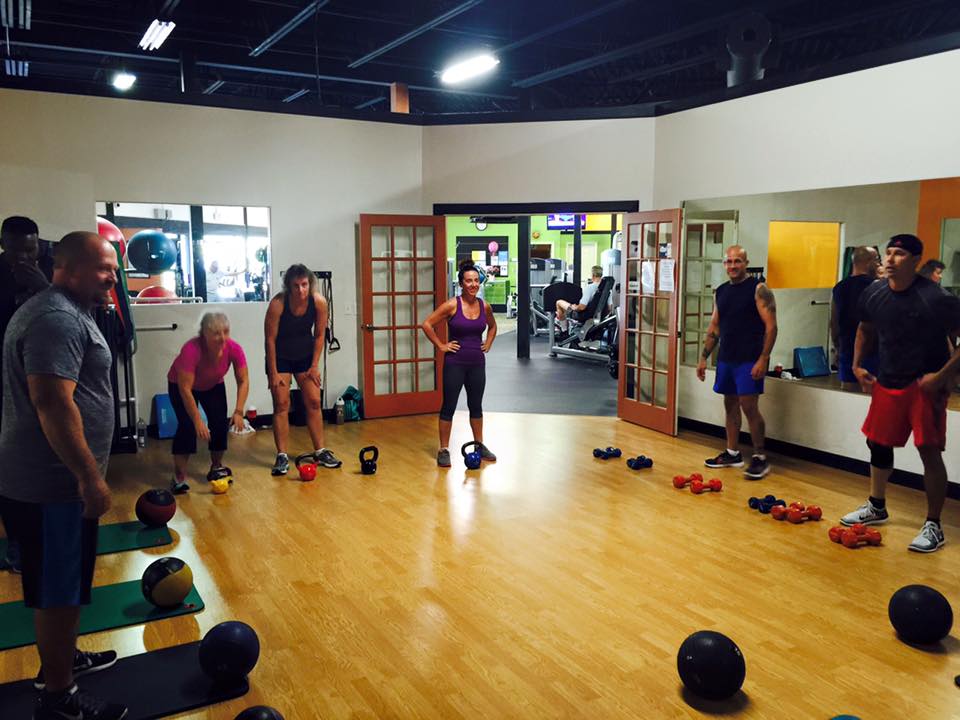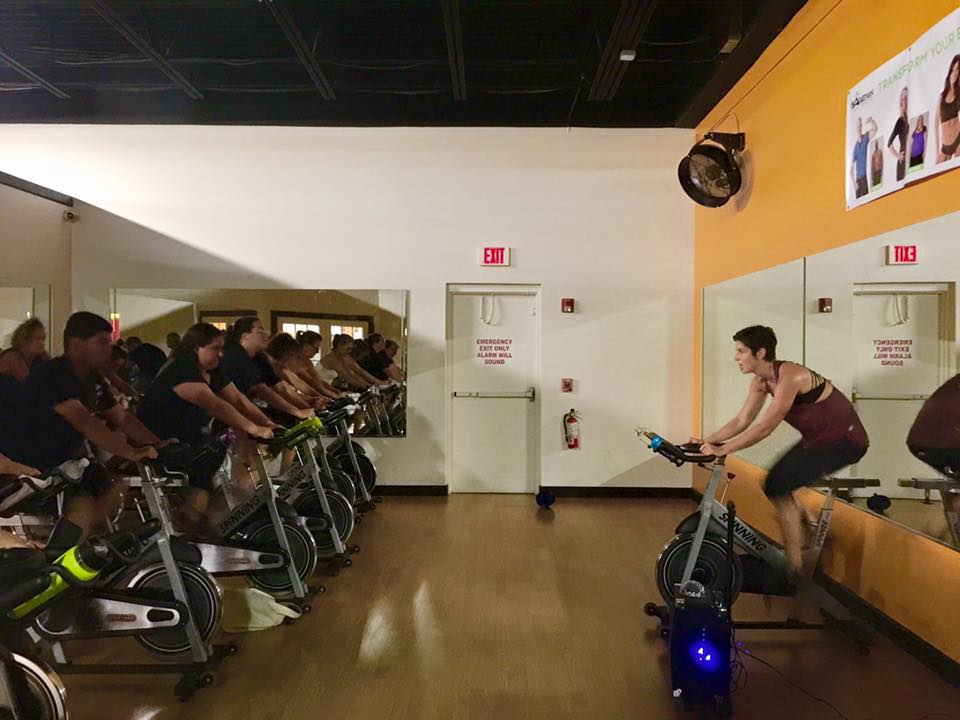I came up in the fitness world 12 years ago, starting my career teaching Step Aerobics and Silver Sneakers at my local neighborhood YMCA. Since then, I’ve had a few career changes and over time have let my certifications expire. While I’ve continued to keep my finger on the pulse of the fitness community including being involved in triathlon, cycling and CrossFit, as well as taking a variety of classes, I haven’t taught in the past 8 years.
When an absolutely amazing opportunity came my way just a few weeks ago that would allow me to go back to teaching full time, I found myself needing to get re-certified, and fast.
A group-exercise certification is an essential step that any qualified instructor should take before teaching a class, and most every fitness center requires one from an accredited organization.
When it comes to organizations who certify for group exercise — which can be any format from cycling to yoga, boot camp to an interval class, and everything in between — there are literally dozens of organizations to choose from.
How Do You Decide Which Organization to Use?
The big names in the industry for group exercise include (but definitely aren’t limited to) ACSM, ACE, AFAA, AFPA, NETA and more. When choosing which organization to become certified though, I highly recommend considering these three factors to help you decide which organization is best for you
-
Where do you want to work? Do they require a specific certification?
The studio where I hope to be hired has a list of 10 organizations whose certifications they will accept. In addition, it’s also important to find out if a Group Exercise certification is sufficient, as some studio’s actually require a Personal Training certification to teach their classes. -
How do you learn best — online, in a classroom setting or a hands-on setting?
Most organizations offer online learning options, as well as workshop options to achieve your certification. The online learning options can consist of lectures, reading materials, videos and more to assist with your self-study. Workshops are typically two- or three-day events where you’ll learn the material you need in a classroom format and test out at the end of the workshop. -
What type of test taker are you?
I found that the biggest difference in the certifying organizations is in how they test out if you’ve learned the material. While I’m a very strong test taker, I really appreciate a practical element in testing. It’s in those circumstances, when I get to showcase my skills, that I feel like I really shine. However, some people may be more comfortable performing a written or multiple choice exam.
For my purposes, I’m an excellent online learner and having been certified before, I was confident that I could update my knowledge sufficiently through an online course. I wanted a certification that included a practical component, and offered online testing that I could do at home. For that reason, I chose to go with an AFAA Certification through their online course.
How Does the AFAA Certification Course Work?
Instructors register online for the $299 AFAA Certification course and receive a study guide, links to 14 videos on topics ranging from kinesiology, anatomy, nutrition, safe class practices, class formats, special populations and more. You will also receive a link to schedule your written exam, proctored through an independent organization online so you can take it at home, as well as a link to schedule your practical exam.
Included in the study guide is a recommended timeline, giving you a 30-day guide to completing the course. In my case, time was of the essence, and I completed the entire course and tested out in a 3-day period. Mind you, I had been certified before and most of the information was simply a review to me. I believe 30 days to be a reasonable time frame to learn and absorb the material if this is new information to you as an instructor.
What Are the Videos and Study Guide Like?
The 14 instructional videos from the AFAA certification course are informative, if a bit dated. They are well-produced and jam-packed full of content. The average video length was around 30 minutes, and I found I spent around an hour with each video, pausing as needed to take notes and fill out the accompanying study guide as we went to ensure that I not only heard the information, but absorbed it and could apply it practically if needed.
The speakers were all articulate, and there were many graphics to go with the content to offer a great visual learning tool for those of us who need to see it to understand it.
The study guide was extremely comprehensive, and there were a handful of questions that were not included in the video information, but DID show up on the written test. I would HIGHLY recommend taking the extra time to Google search and complete all of the questions to ensure that you have all the info that you need to study.
One note — numerous times in the video they reference chapters in the AFFA Textbook, Fitness: Theory and Practice 2010, (a $69 additional charge), but I did not use this resource. In fact, I found that nearly everything that I needed to complete the course was available in the training videos, and I’m not sure it would be a necessary investment.
What About the Written Exam?
After three days of studying, I felt ready to take my written exam. I scheduled the test 24 hours in advance through the provided link, and had dozens of time slot options to choose from.
To take the exam you will sign into a third party proctoring site where you will need a functioning webcam, a decent speed of internet service and a microphone so that the proctor can monitor you while you take the test. They will begin by verifying your identity through your webcam, and proceed through a few checks to ensure that you’re not cheating on your test including having you hold a mirror in front of the cam to prove that there’s no post-it note cheat sheets for you outside of the view of the camera.
You’ll have 1 hour to complete the 100-question test. The questions are all multiple choice, and cover all of the material in the study guide, though the primary focus is on muscle groups, and being able to identify primary movers in the exercises for those groups. Based on the test questions, you can see that the goal of the course is to truly empower you to be able to teach a safe and effective class for participants at every level.
When your exam is complete you notify the proctor, and then log off of their system. You need an 80 percent or better to pass the test, and I was notified within 48 hours that I had passed (with a 98 percent, if I can brag just a little…)
What About the Practical Exam?
I scheduled my practical exam for the next evening, as the slots available for the practical were more limited than those for the written test because an actual AFAA-certified course instructor will proctor your practical exam online.
You will receive a link 24 hours prior to the test that will allow you to sign into the software, check your internet connection, webcam and microphone to know that your system is working appropriately for the test.
The actual practical exam consists of three parts.
-
Demonstration of warm up, cardiovascular training and a cool down.
The proctor will instruct you (and anyone else in your same certification session, up to five people, all on independent webcams) to teach portions of an exercise class while they observe. Your microphone will be off, so you won’t need to worry about verbally cueing, but I used a lot of visual cues in my transitions. The proctor will instruct you to teach a warm up segment of the class (around 5 minutes), where you’ll demonstrate exercises appropriate for a warm up to music that’s provided to you. Following that segment, the proctor will instruct you to transition into exercises that are appropriate for the cardiovascular portion of the class, and finally for a cool down. - The choreography doesn’t need to be complicated. The purpose of this portion of the test is to show that you know the appropriate intensities and movements for each of the portions of the class.
I could see this being a bit challenging for someone who has primarily participated in or taught cycling or yoga, and isn’t used to having to do cardio to a beat using music. My biggest advice here is to really practice ahead of time and know what you want to do in your mind before the test begins. -
Demonstration of strength and stretching exercises for all primary muscle groups.
In this portion of the exam, the proctor asks you to demonstrate exercises for each of the major muscle groups (examples: hamstrings, quadriceps, pectorals, trapezius, etc.) where that muscle is the primary mover. You’ll need to be able to show 2 strength exercises and 1 stretch, and the proctor will cue you when to switch your demonstration.
Again, you won’t have your microphone on during this portion of the test, so visual cues to demonstrate proper alignment are important.
Additionally, at one point in the exam, I noticed that one of the other participants was doing an exercise where the muscle group requested (pectorals) was NOT the primary mover. After a few seconds of doing that exercise, the proctor actually repeated her instructions and emphasized the muscle group that should be the primary mover for the exercise, giving that hopeful instructor the chance to rethink her exercise choice. As a tip, if your proctor repeats her instructions, chances are good that someone is doing something wrong. Be sure to double check your exercise choice, alignment, form and technique to make sure it isn’t you! -
1-2 minute presentation of an exercise at 3 different levels.
During the final part of the practical exam, the proctor will ask you to turn on your microphone and demonstrate for 1-2 minutes a prepared exercise showing different intensity levels. This can be anything of your choice, but I would highly recommend choosing a strength movement that you’re comfortable doing with perfect technique at a beginner, intermediate and advanced level for a perfect presentation.
I chose to do a squat, beginning with a quarter squat, emphasizing form and alignment, then moving to a squat at depth and finally a jump squat for intensity levels.
You are rated on your ability to perform the exercise correctly, your speaking and demonstration ability, and giving cues to ensure the safety of anyone doing the exercise.
That concludes your practical exam. The proctor will let you know that you’ll receive your results emailed within a week, and if you passed, your certifications in the mail in as many as 14 business days.
In my case, I received my results 24 hours later — and in case you’re curious I got 100%!
Now that I’m officially official, I’ll be chasing a new career path and loving every minute of it. Have any of our readers achieved a Group Exercise or Personal Training certification? Which organization did you choose? We would love to hear from you in the comments!



